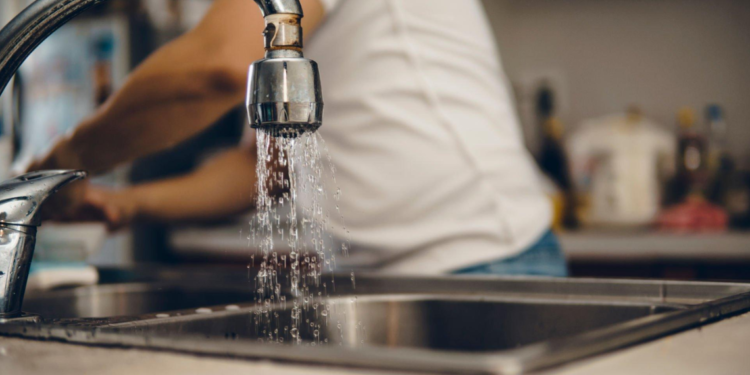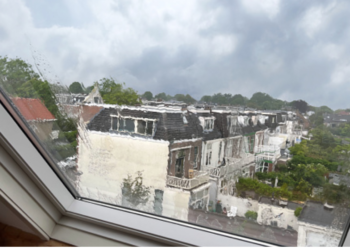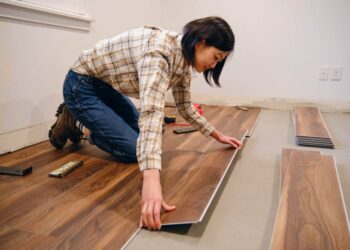Low water pressure in your kitchen sink can be frustrating and inconvenient. It can make it difficult to clean dishes and wash your hands effectively. However, it’s a common problem that can be easily fixed. In this article, we will discuss how to identify and fix low water pressure in your kitchen sink.
What is low water pressure?
Water pressure is the force that pushes water through your pipes and out of your faucets. Low water pressure occurs when the force of the water is not strong enough.
Causes of low water pressure
There are several reasons why you may be experiencing low water pressure in your kitchen sink.
Clogged aerator: The aerator is a small screen located at the end of your faucet. It can become clogged with mineral deposits, dirt, or debris, which can reduce the flow of water.
Supply valves: The supply valves under your sink control the flow of water to your faucet. If they are not fully open, you may experience low water pressure.
Pipes: Over time, pipes can become corroded or clogged with mineral deposits, which can reduce the flow of water.
Water pressure regulator: Your home may have a water pressure regulator that is set too low, causing low water pressure in your kitchen sink.
Municipal water supply: If your entire home is experiencing low water pressure, it may be due to a problem with the municipal water supply.
How to diagnose low water pressure in your kitchen sink

Before you can fix the problem, you need to diagnose the cause of the low water pressure. Here are a few steps to take:
- Check the water pressure in other areas of your home. If the water pressure is low throughout your home, the problem is likely with the municipal water supply. If the water pressure is only low in your kitchen sink, the problem is likely with your sink’s plumbing.
- Remove the aerator from your faucet and turn on the water. If the water flows freely without the aerator, the problem is likely a clogged aerator.
- Check the supply valves under your sink. Make sure they are fully open.
- Check the pipes under your sink for any signs of damage or corrosion.
Fixing low water pressure in your kitchen sink
Once you have identified the cause of the low water pressure, you can take steps to fix the problem. Here are a few solutions to try:
1. Check the aerator
If the aerator is clogged, you can clean it by soaking it in vinegar overnight. If that doesn’t work, you may need to replace the aerator.
2. Check the supply valves
If the supply valves are not fully open, turn them clockwise until they are fully open.
3. Check the pipes
If the pipes are damaged or corroded, you may need to replace them. This is a job best left to a plumber.
Check the water pressure regulator
If your home has a water pressure regulator, it may be set too low. The water pressure regulator is usually located near the main water shutoff valve. To adjust the pressure, you will need a pressure gauge and a wrench.
- First, turn off the main water shutoff valve. Then, attach the pressure gauge to an outdoor faucet or the laundry room faucet. Turn on the faucet and check the pressure gauge. The optimal water pressure should be between 45 and 60 psi (pounds per square inch).
- If the pressure is too low, use a wrench to turn the adjusting screw on the pressure regulator clockwise to increase the pressure. If the pressure is too high, turn the screw counterclockwise to decrease the pressure.
Call a plumber
If you have tried all of the above solutions and are still experiencing low water pressure in your kitchen sink, it may be time to call a plumber. A professional plumber will be able to diagnose the problem and provide a solution that is tailored to your specific situation.
Final Thought:
Low water pressure in your kitchen sink can be frustrating, but it is usually a simple problem to fix. By following the steps outlined in this article, you can identify the cause of the problem and take steps to fix it. If you are unable to fix the problem on your own, don’t hesitate to call a professional plumber for assistance.
Frequently Asked Questions
Can low water pressure in my kitchen sink be dangerous?
Low water pressure itself is not dangerous, but it can be a symptom of a more serious plumbing problem.
What is the optimal water pressure for my home?
The optimal water pressure for your home is between 45 and 60 psi.
Can I adjust the water pressure regulator myself?
Yes, you can adjust the water pressure regulator yourself if you have the proper tools and knowledge. However, if you are unsure of what you are doing, it is best to call a professional plumber.
Can a clogged aerator cause low water pressure in my kitchen sink?
Yes, a clogged aerator can reduce the flow of water and cause low water pressure in your kitchen sink.
How often should I have my pipes checked for damage or corrosion?
It is a good idea to have your pipes checked for damage or corrosion every few years, especially if you live in an older home.



